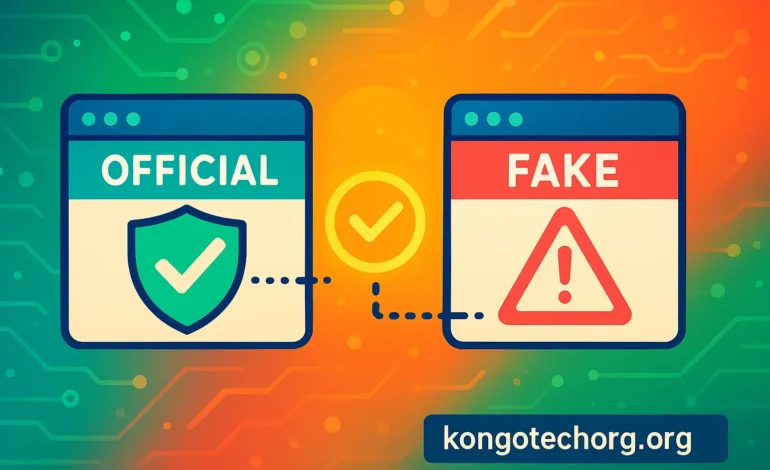Why Am I Getting Tarkov Ping Spikes and How Do I Fix Them?

Escape from Tarkov is one of the most unforgiving and intense shooters in gaming today. Every second matters, every bullet counts, and even the smallest mistake can cost you valuable gear. Yet many players find themselves facing a frustrating problem that has nothing to do with skill or decision-making, Tarkov ping spikes.
If you have ever lost a fight because your shots did not register or your character rubber-banded into danger, you know how crushing the experience can be. The good news is that ping issues are not unsolvable, and understanding what causes them is the first step to fixing them.
What Exactly Are Tarkov Ping Spikes?
Ping is the time it takes for your computer to send data to the game server and receive a response, measured in milliseconds. When that time suddenly increases, you experience what is commonly referred to as a ping spike. In Escape from Tarkov, even a difference of a few milliseconds can mean your opponent sees and reacts before you. That delay is why Tarkov lag spikes feel so punishing.
Players experiencing Tarkov latency problems often describe rubber-banding, delayed movement, or actions that seem out of sync with what is happening on screen. This is not just a minor inconvenience—it can ruin raids. Smooth gameplay relies on a stable connection, and any fluctuation in ping disrupts that balance.
Why Escape from Tarkov Ping Issues Happen
Tarkov ping spikes can stem from several factors, some of which are within your control and others that depend on the game’s servers. Tarkov server lag is one of the most common explanations, especially during peak play hours when servers are overloaded. When too many players connect at once, response times slow down and everyone suffers.
Another frequent cause is distance from the server. The farther away you are physically from a data center, the longer it takes for information to travel. This is why Tarkov server region selection matters so much. Choosing a closer server can drastically reduce delay.
Tarkov network problems on your end are another major factor. Wi-Fi interference, outdated routers, background downloads, or poor ISP routing all contribute to Tarkov unstable connection issues. Escape from Tarkov connection issues can also happen when your internet provider takes inefficient paths to the game’s servers, adding unnecessary milliseconds. For a game where timing is everything, those extra milliseconds hurt.
Read Also: What Is Viraltips Online and How Do Its Content Strategies Drive Growth?
How Tarkov Ping Spikes Affect Gameplay
When ping spikes occur, the effects are immediate and noticeable. Tarkov rubber-banding makes your character snap back to previous positions, breaking immersion and often placing you in danger. Shots may appear to land on your screen but fail to register with the server, which is perhaps the most frustrating outcome during firefights. Tarkov stuttering online further disrupts the flow, making it impossible to predict enemy movement accurately.
Persistent Escape from Tarkov ping issues also affect fairness in raids. A player with consistently lower latency always has the upper hand against someone battling Tarkov high latency problems. The difference may only be a split second, but in a game as competitive as Tarkov, that split second can mean survival or death.
Running a Tarkov Ping Test
Before jumping to solutions, it is important to confirm the issue. A Tarkov ping test tool allows you to measure latency and track whether spikes are happening on your end or the server’s side. In-game, pressing the console key and enabling network stats can show real-time data, including Tarkov FPS and ping. External tools can also test latency to multiple servers worldwide, giving you a clearer idea of where you stand.
Understanding whether the issue comes from your own network, the distance to the server, or Escape from Tarkov ISP issues will help you know where to focus your fixes.
Fixing Tarkov High Latency
Once you know what you are dealing with, several strategies can help stabilize your connection. The most effective step is switching from Wi-Fi to Ethernet. Tarkov Wi-Fi vs Ethernet is no contest—wired connections eliminate interference, reduce packet loss, and provide more consistent speeds.
Closing background programs before launching the game can also make a huge difference. Applications like streaming platforms, downloads, or even automatic cloud backups create Tarkov network problems that increase ping. Freeing up bandwidth ensures Tarkov lag during raids does not come from something running in the background.
Another important fix is manually adjusting Tarkov server region selection. The auto option does not always put you on the lowest-latency server. Running a Tarkov ping test tool, comparing results, and then picking the closest server yourself can result in far smoother gameplay.
Restarting or updating your router can also clear up hidden issues. Many players underestimate how often Tarkov unstable connection problems come from outdated firmware or hardware that simply needs a refresh.
Advanced Tarkov Internet Optimization
For those who want to go further, advanced techniques can minimize Tarkov latency problems even more. Many modern routers allow Quality of Service (QoS) settings, which prioritize gaming traffic over other devices. Configuring QoS ensures that Escape from Tarkov connection issues do not come from another device in your household eating up bandwidth.
Switching to a faster DNS service such as Cloudflare or Google DNS can also improve Tarkov slow response time, especially when your ISP’s default servers are inefficient.
Monitoring for Tarkov packet loss is another important step. Tools like PingPlotter help identify where data is being lost along the route to the server. Packet loss not only increases ping but can create freezing or rubber-banding effects.
Some players also explore third-party network optimization tools that reroute traffic through faster pathways. While not all services deliver results, in certain cases they can reduce spikes caused by poor ISP routing.
The Bigger Picture of Ping and Fair Play
Tarkov lag compensation is built into the game’s netcode to keep things fair, but no system is perfect. A player with smoother connection will almost always experience fewer disadvantages compared to someone battling Tarkov lag spikes throughout a raid. That is why Battlestate Games continues to work on improving server stability and distribution.
Still, the best defense for individual players is awareness and preparation. Regularly running Tarkov ping test tools, choosing the right server, and optimizing your home network keeps you in the best possible position. You may not be able to eliminate every spike, but you can minimize them enough that they do not decide the outcome of your raids.
Conclusion
Escape from Tarkov is a game that demands precision and focus. Dealing with Tarkov ping spikes only adds unnecessary frustration to an already challenging experience. By understanding the root causes whether server distance, Tarkov network problems, or Escape from Tarkov ISP issues you can take steps to improve your situation.
Switching to wired connections, managing bandwidth, optimizing server selection, and exploring advanced settings all contribute to smoother gameplay. The difference between winning and losing often comes down to a single second, and minimizing Tarkov latency problems ensures that second is determined by skill, not connection.
Every raid in Tarkov is high stakes. By addressing Escape from Tarkov connection issues head-on, you give yourself the best chance of surviving and thriving, free from the drag of lag spikes.
FAQs
1. Why do I keep getting Tarkov ping spikes?
Tarkov ping spikes happen due to server distance, Wi-Fi issues, ISP routing, or overloaded servers.
2. How can I fix Escape from Tarkov ping issues?
Switch to Ethernet, close background apps, choose a closer server, and restart your router.
3. Does Wi-Fi cause Tarkov latency problems?
Yes, Wi-Fi is unstable compared to Ethernet and often causes packet loss and lag spikes.
4. What is Tarkov rubber-banding?
It’s when your character snaps back due to high latency, unstable connections, or packet loss.
5. How do I run a Tarkov ping test?
Use the in-game console command or external ping test tools to check server latency.





